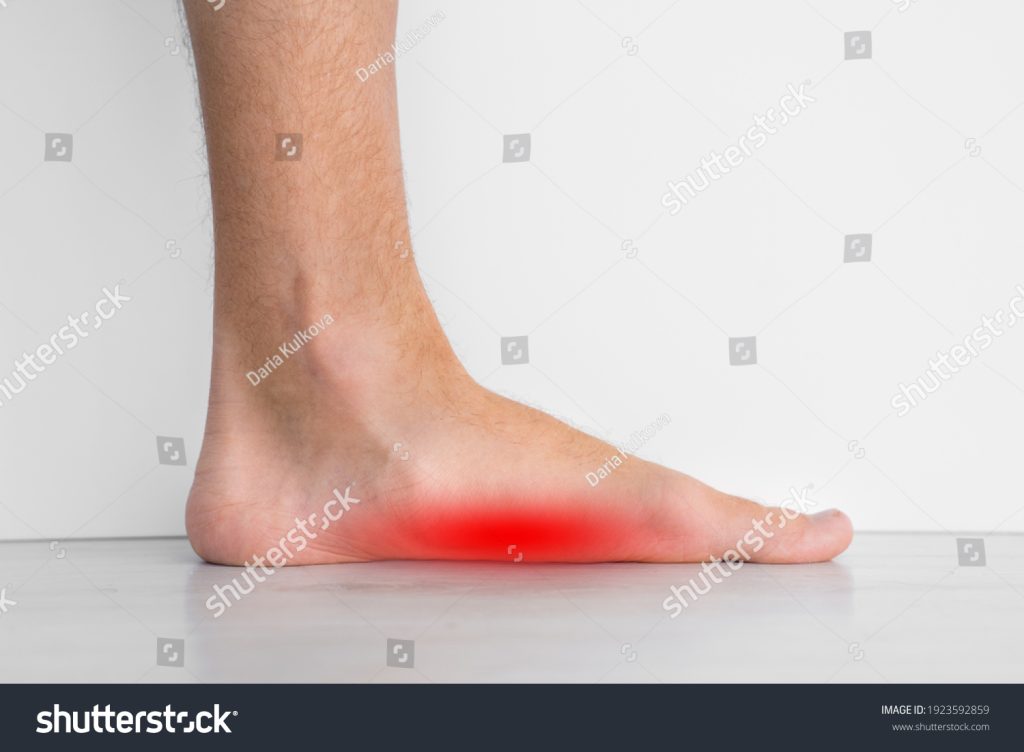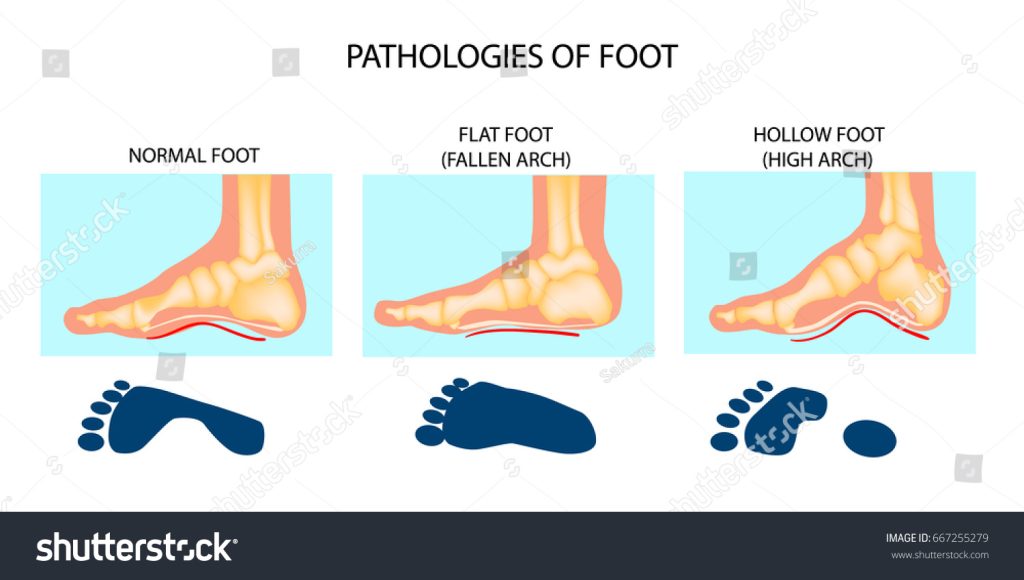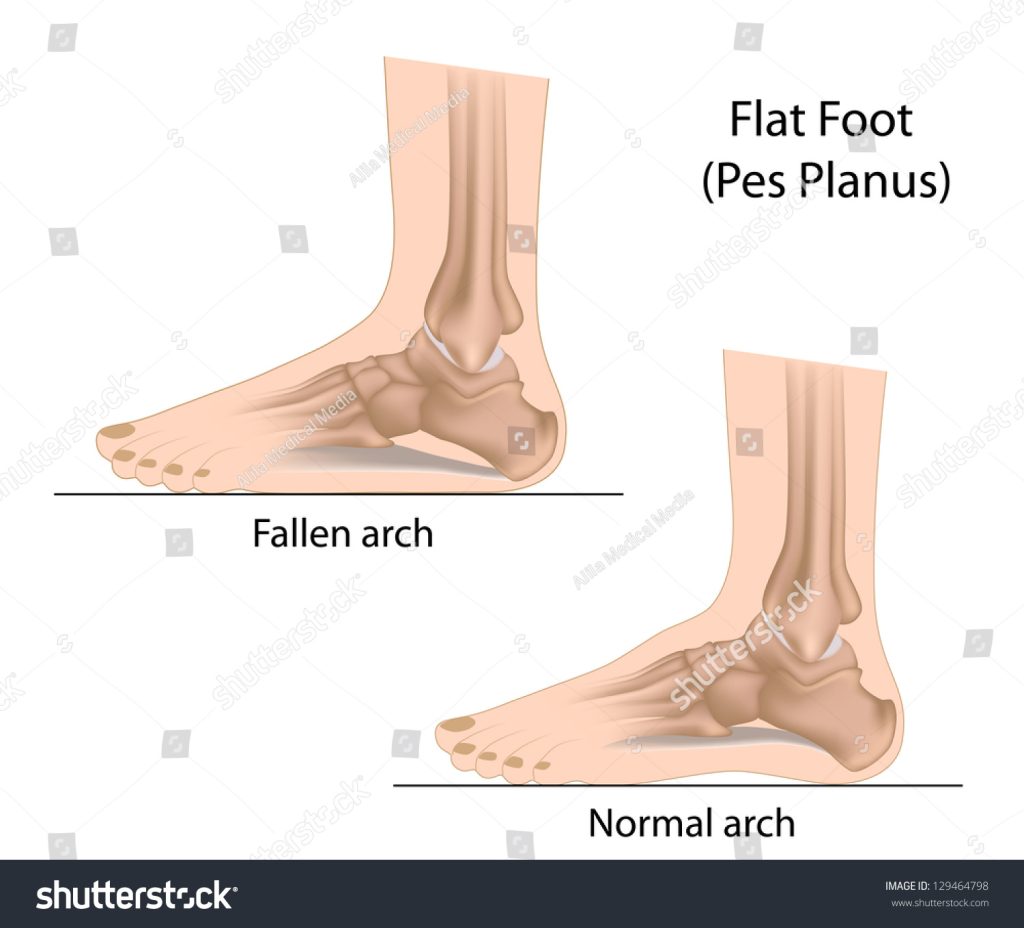
Pes planus, also known as flat feet or fallen arches, is a condition characterized by the absence or reduced height of the medial arch (inner arch) of the foot. In individuals with pes planus, the entire sole of the foot comes into contact with the ground when standing or walking, rather than having a distinct arch in the middle.
Types:
There are several types of pes planus, each with different characteristics and underlying causes. The types of pes planus include:
Flexible Pes Planus: This is the most common type of flat feet. The arch appears normal when the foot is lifted off the ground, but it collapses or becomes less pronounced when weight is placed on the foot. Flexible pes planus often does not cause significant symptoms or functional limitations.
Rigid Pes Planus: In rigid flat feet, the arch is absent both when the foot is lifted off the ground and when weight is placed on the foot. This type of pes planus is usually due to a structural abnormality in the bones of the foot and can be associated with more severe symptoms and functional limitations.
Congenital Pes Planus: Congenital flat feet are present at birth and may be caused by genetic factors or abnormal development of the bones, ligaments, or tendons in the foot. This type of flat feet can be flexible or rigid.
Acquired Pes Planus: Acquired flat feet develop over time due to various factors, including injuries, conditions that affect the foot’s structure or function, or repetitive stress on the foot. Conditions such as posterior tibial tendon dysfunction (PTTD), which involves damage or dysfunction of the tendon that supports the arch, can lead to acquired pes planus.
Compensation Pes Planus: Compensation flat feet occur when the arch of one foot flattens to compensate for a problem or condition in the other foot, such as an injury or deformity. This type of pes planus is often flexible and may resolve once the underlying issue is treated.
Clinical Manifestations:
The clinical manifestations or symptoms associated with pes planus, or flat feet, can vary depending on the individual and the severity of the condition. Some common clinical manifestations of pes planus include:
Foot pain: Flat feet can cause pain in various areas of the foot, including the arch, heel, and along the inside of the foot. The pain may be exacerbated by standing, walking, or participating in physical activities.
Arch fatigue or cramping: Individuals with pes planus may experience fatigue or cramping in the arch area after prolonged periods of standing or walking.
Ankle instability: The lack of a well-defined arch in flat feet can contribute to ankle instability. This can result in frequent ankle sprains or a feeling of the ankle giving way.
Overpronation: Overpronation refers to excessive inward rolling of the foot during walking or running. Flat feet can contribute to overpronation, which may lead to biomechanical issues, such as misalignment of the lower limbs and increased stress on the joints, potentially causing pain in the ankles, knees, hips, or lower back.
Difficulty with balance: Some individuals with pes planus may experience difficulty with balance or feel less stable while standing or walking, particularly on uneven surfaces.
Foot deformities: In severe cases of flat feet, structural deformities may develop, such as bunions (hallux valgus), hammertoes, or an outward tilting of the heel (valgus hindfoot).
Lower limb fatigue or pain: Pes planus can alter the alignment and distribution of forces in the lower limbs, leading to fatigue or pain in the feet, ankles, knees, hips, or lower back.
Causes of pes planus:

Pes cavus, also known as high arches, is a foot deformity characterized by an abnormally high arch in the foot. It can be caused by various factors, including:
Inherited or genetic factors: Pes cavus can be caused by genetic abnormalities that affect the structure and function of the foot. Certain genetic conditions, such as Charcot-Marie-Tooth disease, are commonly associated with pes cavus.
Neurological disorders: Many cases of pes cavus are linked to underlying neurological conditions that affect muscle tone and control. These conditions include spinal cord compression, cerebral palsy, muscular dystrophy, polio, and peripheral neuropathy.
Muscular imbalances: Imbalances between the muscles in the lower leg and foot can contribute to the development of pes cavus. Weakness in the muscles that stabilize the foot and ankle, such as the peroneal muscles, can lead to the arches becoming excessively high.
Connective tissue disorders: Some connective tissue disorders, such as Ehlers-Danlos syndrome and Marfan syndrome, can lead to pes cavus as a secondary manifestation of the underlying condition.
Trauma or injury: In rare cases, trauma or injury to the foot, such as fractures or ligament damage, can result in the development of pes cavus.
Diagnosis:
The diagnosis of pes planus, or flat feet, typically involves a comprehensive evaluation by a healthcare professional, such as a podiatrist or orthopedic specialist. The diagnosis process may include the following:
Medical history: The healthcare provider will ask about your symptoms, duration of symptoms, and any previous foot or ankle injuries. They will also inquire about your family history of flat feet or other foot conditions.
Physical examination: The healthcare provider will conduct a physical examination of your feet and ankles. They will observe the arches of your feet while standing, walking, and possibly while performing certain movements. They may also assess the alignment of your lower limbs and observe for any signs of overpronation or foot deformities.
Gait analysis: A gait analysis may be performed to evaluate your walking pattern and foot mechanics. This can help determine if there is excessive pronation or other abnormalities in your gait that may be associated with flat feet.
Imaging tests: In some cases, imaging tests may be ordered to further evaluate the foot structure and rule out other potential causes of foot pain or deformity. X-rays can provide detailed images of the bones in the feet, while other imaging modalities such as MRI or CT scans may be used to assess soft tissues, ligaments, or tendons.
Foot pressure analysis: In specialized cases, a healthcare provider may use a pressure mat or similar device to assess the distribution of weight and pressure across the foot while standing or walking.
Management:

The treatment of pes planus, or flat feet, focuses on alleviating symptoms, improving foot function, and addressing any underlying causes or contributing factors. Treatment options for pes planus may include:
Supportive footwear: Wearing supportive shoes with good arch support, cushioning, and stability can help provide better alignment and reduce discomfort. Look for shoes specifically designed for individuals with flat feet or consider using custom orthotic inserts or arch supports for additional support.
Physical therapy: A physical therapist can guide you through exercises to strengthen the muscles of your feet, ankles, and lower legs. These exercises can improve foot mechanics, provide better arch support, and enhance overall foot function.
Stretching and flexibility exercises: Stretching exercises targeting the calf muscles, Achilles tendon, and plantar fascia can help improve flexibility and reduce tension in the foot. This can alleviate discomfort associated with pes planus.
Footwear modifications: In some cases, modifications to the footwear may be recommended, such as using heel cups, arch supports, or orthotic devices to provide additional support and improve foot alignment.
Weight management: Maintaining a healthy weight can help reduce stress and strain on the feet, which can benefit individuals with pes planus.
Medications: Over-the-counter nonsteroidal anti-inflammatory drugs (NSAIDs) may be used to temporarily relieve pain and reduce inflammation. However, it’s important to use medications under the guidance of a healthcare professional.
Assistive devices: Depending on the severity of symptoms, your healthcare provider may suggest the use of assistive devices, such as ankle braces or night splints, to provide additional support and alleviate discomfort.
- Surgery is typically reserved for severe cases of pes planus that do not respond to conservative treatments. It may involve procedures to reconstruct the arches, stabilize the foot, or correct associated deformities. However, surgery is not usually the first-line treatment and is only considered when other interventions have been ineffective.
Conclusion:

In conclusion, pes planus, or flat feet, is a condition characterized by the absence or reduced height of the arches in the feet. It can cause symptoms such as foot pain, arch fatigue, and ankle instability. Treatment options for pes planus aim to alleviate symptoms and improve foot function. These may include supportive footwear, orthotic inserts, physical therapy exercises, stretching, and, in severe cases, surgery. Consulting with a healthcare professional is important for an accurate diagnosis and to develop an appropriate treatment plan tailored to individual needs.

